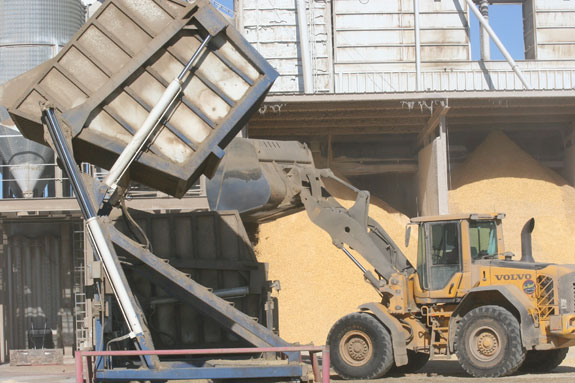From June 2010 to April 2011 prices increased by 20 percent and now June 2011 prices are 13 percent higher than they were one year ago. Nebraska live fed cattle prices were $92 per cwt. in June 2010. By January 2011 they had increased to $105 per cwt and by April they were at $120 per cwt. trading at $124 the first week of April. That is over a $30 per cwt increase in less than a year. That is an amazing market rally of 30 percent in less than a year.
As box beef prices retreated from April to June, so did fed cattle prices. The average price for fed steers in Nebraska is now $105 per cwt. That is still a 15 percent increase over prices from one year ago. As the market adjusts to the relative supply and demand conditions, these price adjustments occur. In April there was a very short supply of fed cattle, so packers were forced to pay more for them. That is why fed cattle prices increased more than box beef prices. However, as the supply of fed cattle have become relatively more plentiful in the last month, fed cattle prices have dropped more than box beef prices have dropped.

Before looking at feeder cattle prices, let's look at corn prices. In June 2010, the price of corn in Omaha, Nebraska was $3.34 per bushel. By January that price had increased to $6.06 per bushel and in April of 2011 the price averaged $7.19 per bushel. However, unlike box beef and fed cattle there has been no downturn in the price of corn. The price of corn in Omaha last week was $7.59 per bushel. Corn price has more than doubled from one year ago. Are the forces of supply and demand working in the corn market? The answer is yes in that we do not have enough corn to supply all the users of corn. The year end, ending stocks of corn have been declining the last couple of years. That means we are using more corn than we are producing. Therefore prices are rising.
However, the market forces are not completely free to work in this market. There is a federal government mandate on how much ethanol MUST be produced from corn and even though the price of corn has increased dramatically in the last year, the market interfering, federal government mandate states that we must produce even more corn-based ethanol this year than we did last year. Therefore, instead of being permitted to respond to market signals and use less corn, the ethanol industry, the largest single user of corn, must use more corn rather than less corn. The result is that the price of corn continues to increase.
What have feeder cattle prices done over the last year? In June 2010 a 750-pound steer in Nebraska sold for $118 per cwt. By January 2011 that price had increased to $127 per cwt. and by April the price averaged $138 per cwt. That is an increase of 17 percent since June 2010. Prices have now fallen back to $126 per cwt., a 7 percent increase over June 2010 prices. If corn prices had stayed the same over the past year feeder cattle prices would likely have increased even more than fed cattle prices did. Even if corn prices had increased at the same rate of box beef and fed cattle prices, about 15 percent for the year, then it is likely that feeder cattle prices would be more than 15 percent higher than they were a year ago.
So, if you cow-calf producers and stocker operators receive a much lower price this fall for your feeder cattle do not blame the feedlot owners and don't even blame the "evil" packers. They are both responding to market conditions. Blame your U.S. congressmen and let them know that you do not support the mandates on the quantity of ethanol that must be produced from corn. ![]()
Dillon M. Feuz is a professor of economics at Utah State University. This originally appeared on the "In the Cattle Markets" e-newsletter.







